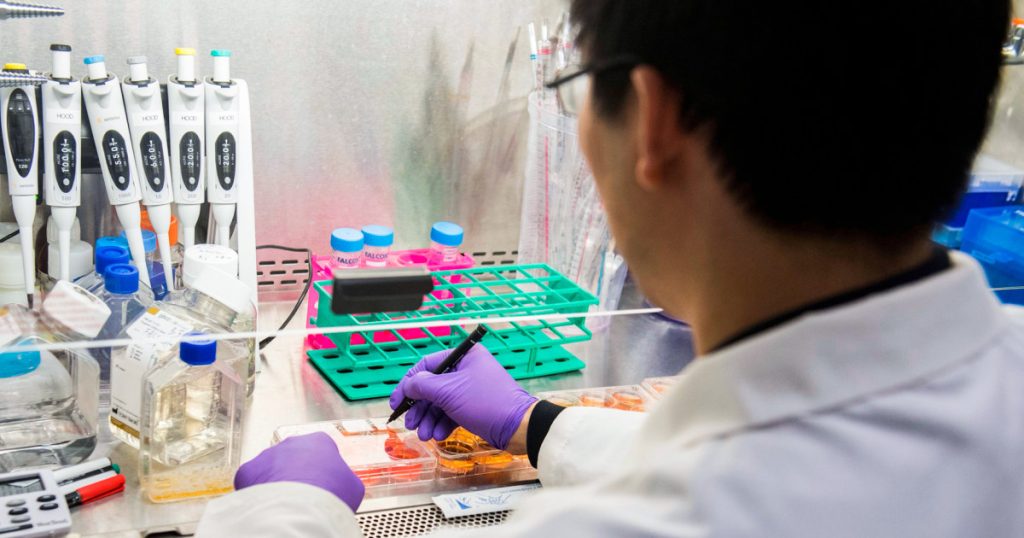The NIH’s Decision to Cut Indirect Research Funding: A Threat to Medical Progress?
A recent decision by the National Institutes of Health (NIH) to reduce indirect research funding has sparked widespread concern among researchers, medical professionals, and academic institutions. The NIH, a cornerstone of medical research in the United States, announced a plan to cap indirect cost reimbursements at 15%, down from the previous rate of approximately 27%. This change, which was temporarily halted by a federal judge following a lawsuit from 22 state attorneys general, has far-reaching implications for the research community. Indirect funding, often misunderstood as mere administrative overhead, is crucial for maintaining the infrastructure that supports groundbreaking medical research. Without these funds, institutions worry that progress in understanding and treating diseases like cancer, diabetes, and heart disease could grind to a halt.
The Critical Role of Indirect Costs in Research
Indirect costs, though not directly tied to patient care, are essential for the day-to-day operations of research institutions. These funds cover everything from laboratory equipment, utilities, and maintenance to the salaries of support staff, such as janitors and technicians who keep facilities running smoothly. Dr. Theodore Iwashyna, a pulmonologist and critical care physician at Johns Hopkins School of Medicine, emphasized that indirect costs are not just about administrative tasks but are vital for creating and maintaining the physical and technological infrastructure needed for cutting-edge research. "Indirect costs are the money you need to have a refrigerator and to pay your electric bill so that the milk and eggs don’t go bad," explained Dr. Robert Golden, dean of the University of Wisconsin-Madison School of Medicine and Public Health. Without these funds, laboratories cannot function, and critical research projects would be forced to shut down.
The Potential Consequences of Reduced Indirect Funding
The NIH’s decision to slash indirect funding has sent shockwaves through the medical research community. Researchers warn that the reduction could lead to widespread layoffs, the suspension of clinical trials, and the closure of laboratories. Dr. Iwashyna, whose own research on chronic illnesses like pneumonia relies heavily on NIH funding, pointed out that these cuts will disproportionately affect the ability of institutions to conduct life-saving research. "Everybody who comes to a place like Johns Hopkins, who comes to a place like Ohio State University to get a second opinion, the ability to do that depends on the research they’re doing," he said. The lawsuit filed by state attorneys general argues that the changes will have an "immediate and devastating" impact on the medical research ecosystem, threatening not only current research projects but also the training of the next generation of scientists and physicians.
Opposition to the NIH’s Decision
The NIH’s decision has been met with fierce opposition from academic and medical leaders across the country. Dr. Alan Garber, president of Harvard University and a physician, warned that the cuts will slow the discovery of new treatments and shrink opportunities for training future scientific leaders. Dr. Tina Tan, president of the Infectious Diseases Society of America, went further, stating that the reductions will "eliminate the promise of lifesaving medical treatments" and leave the nation more vulnerable to disease outbreaks and bioterror attacks. Even the Children’s Hospital Association, which represents more than 200 children’s hospitals, has urged the Trump administration to rescind the new policy, arguing that it will threaten the ability of children’s hospitals to provide groundbreaking cures for pediatric illnesses.
The NIH’s Rationale and the Broader Debate
The NIH has defended its decision as a necessary cost-cutting measure, estimating that the change could save taxpayers more than $4 billion annually. Supporters of the reduction, including Elon Musk, who heads a Trump-appointed group aimed at reducing federal spending, have criticized the previous indirect cost rates as excessive and wasteful. Musk called the old system "a ripoff!" and highlighted that $9 billion of the $35 billion the NIH granted for research last year went toward administrative overhead. However, researchers and academic leaders argue that these funds are not wasted but are instead essential for creating and sustaining the infrastructure that makes medical breakthroughs possible. The debate over indirect costs underscores a deeper tension between the need for fiscal responsibility and the importance of investing in the infrastructure that drives scientific progress.
The Future of Medical Research and Patient Care
As the legal battle over the NIH’s decision continues, the broader implications for medical research and patient care remain uncertain. If the indirect cost cap is ultimately implemented, researchers fear that the United States could lose its leadership in global medical innovation. Institutions like Johns Hopkins, which rely heavily on NIH funding, may be forced to scale back critical research projects, delay clinical trials, and reduce their workforce. Patients, in turn, could suffer as the development of new treatments and cures is slowed. While the NIH’s decision was motivated by a desire to streamline spending, the potential consequences for public health and scientific progress cannot be ignored. The outcome of this debate will have far-reaching consequences for the future of medical research and the millions of patients who rely on it.












